Ancient Psychedelia: Alien Gods & Mushroom Goddesses
Online Book - Chapter 15, Page 298
Back to Online Book Mainpage / Next Page (Chapter 15, Page 299)
Mithridates I of Parthia (171–138 BC) greatly expanded the empire when he seized Media and Mesopotamia from the Seleucids. Their earliest enemies were Seleucids in the west and the Scythians in the east, then Bactrians and Kushanas and for two centuries, the Roman Empire. Ardashir I, ruler of Estakhr in Fars, revolted against the Arsacids and killed their last ruler, Artabanus V, in 224 AD, then set up the Sassanian kingdom. Ardashir I, upon taking kingship set out to review the religious heritage of the empire and create an Orthodoxy or sorts and selected a member of the Zoroastrian clergy, Tansar for the task. The Sassanian or Sasanid kingdom was the last Persian Empire before the rule of Islam and lasted from 224 to 651 AD, succeeding the Parthian Empire. The Parthian Empire had some very interesting coins featuring mushrooms buttons prominently displayed on the heads and ears of rulers (25a, b, c) along with what look like “spores” sprouting from all directions (25d). 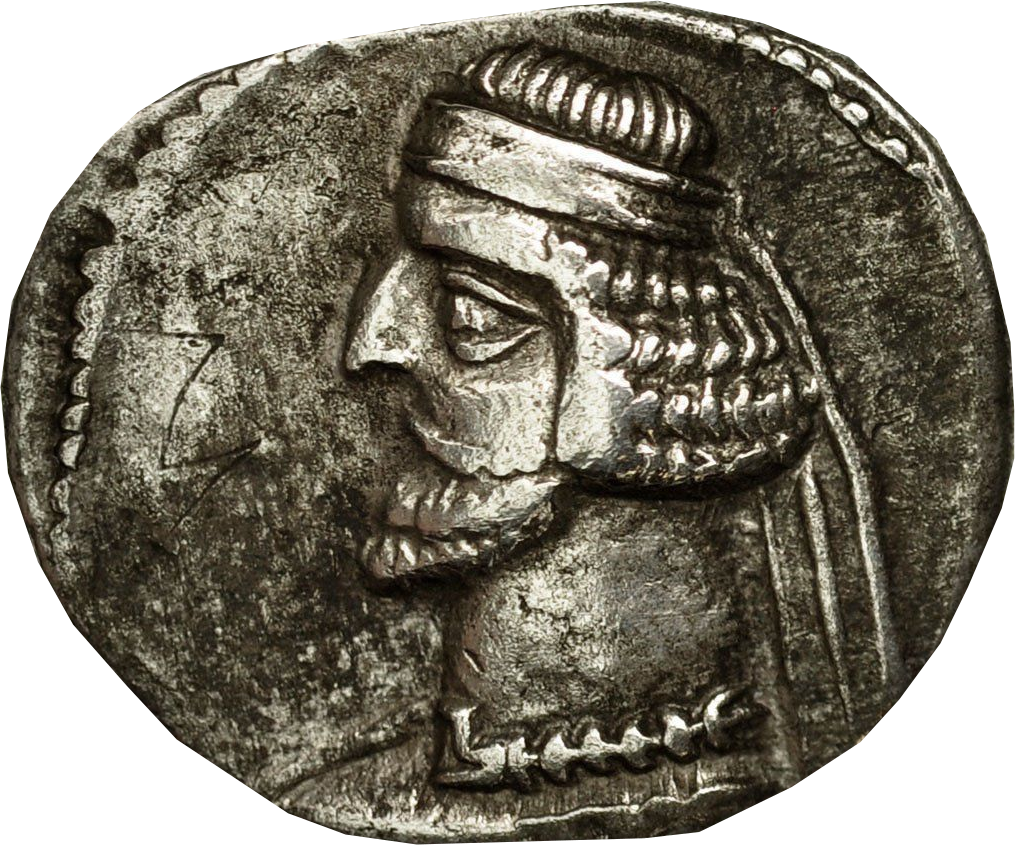 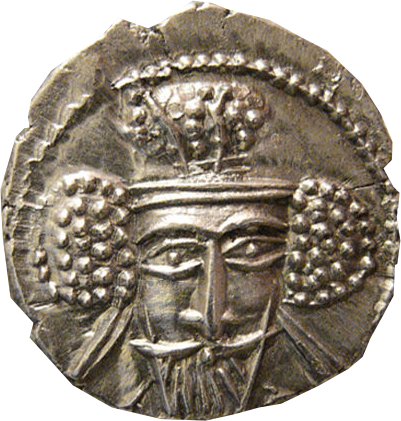 R: (25b) Parthia Vologases V. Pointed beard of straight lines hair in bunches above diadem and at sides c. 191-207/8 AD L: (25c) Parthia. Osroes I. Ekbatana. long pointed beard earring visible, hair in bunches above head and over ears c. 109-129 AD 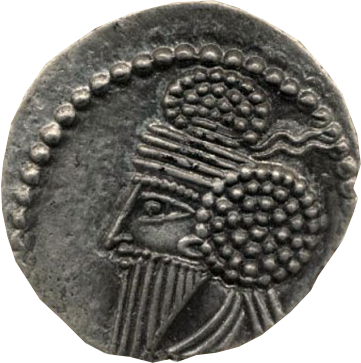 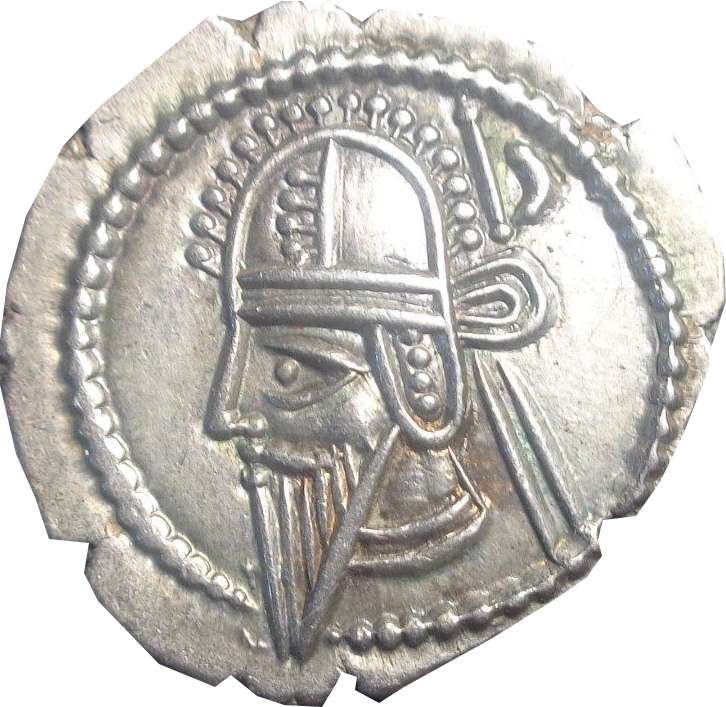 R: (25d) Vologases VI. Ekbatana. Pointed beard, wearing tiara; within pelleted circle. c. 208-228 AD L: (25e) Sassanid, Shapur II, c. 309-379 AD 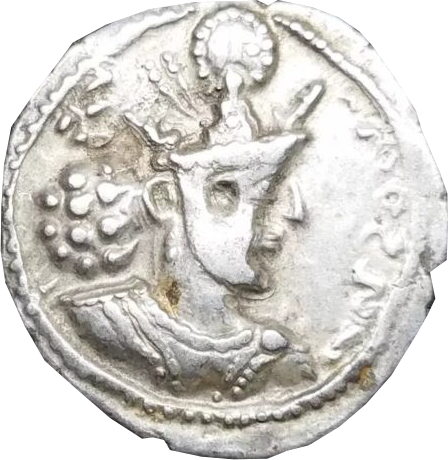 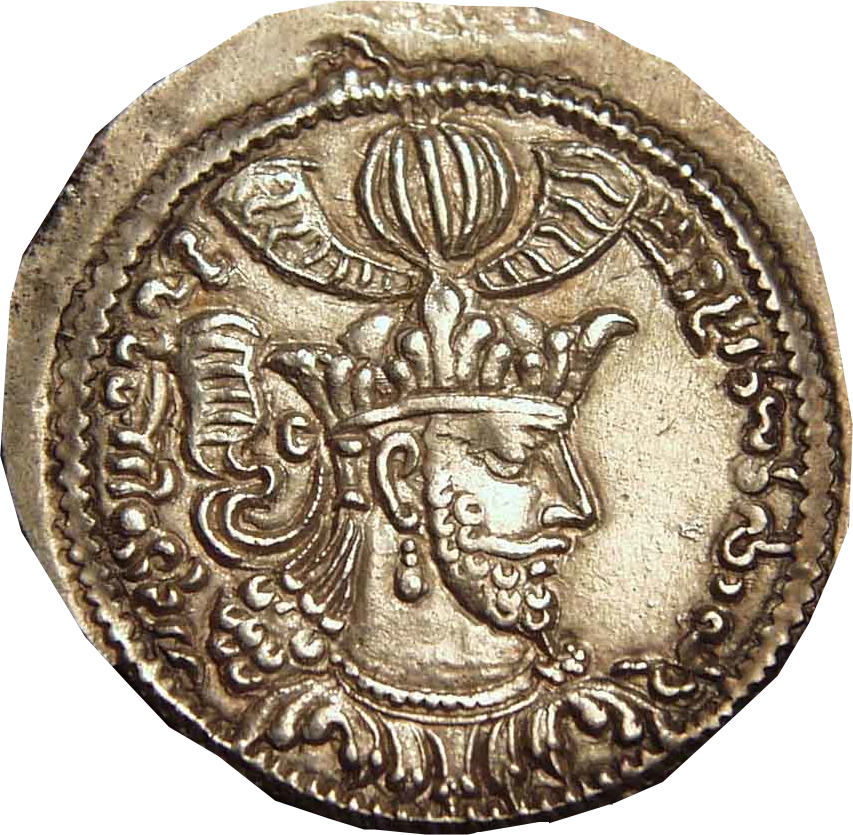 R: (25f) Kushano-Sassanid or Kidarite, "Varahran" Fire altar with attendants at left and right. c. 200-300 AD |
Coins from the Sassanid era c. 200-579 AD, prominently display mushroom buttons as earrings on the Kings and as part of the headdress as well (25e, f, g, h). It would be difficult at this point for any expert to argue that early Arab Muslims were not influenced by psychedelic mushrooms as well. Similar spore shapes have been seen on other coins from the later Indo-Sassanian period c. 1210-1300 AD, which depict a mushroom in the center surrounded by what appear to be spores (25j).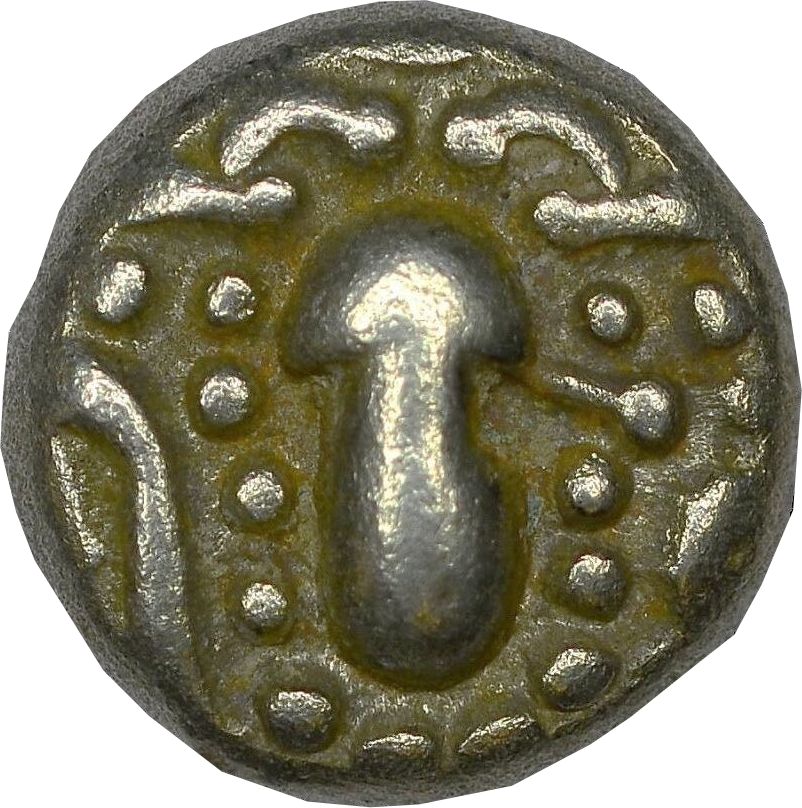 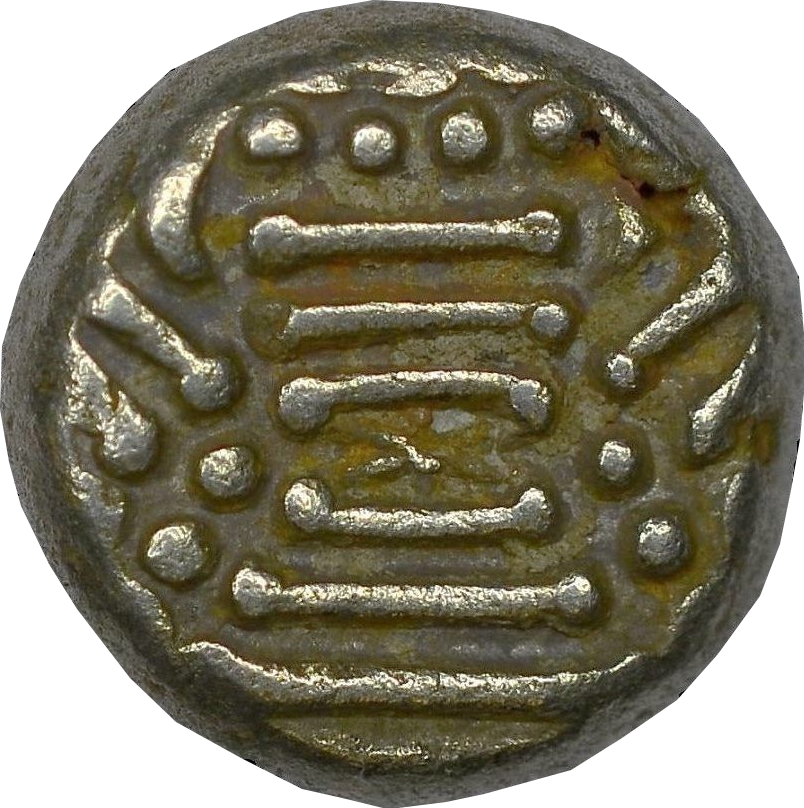 (25j) India Vaghela Dynasty, Indo-Sasanian c. 1210-1300 AD The Sassanian kingdom encompassed all of today's Iran, Iraq, Eastern Arabia (Bahrain, Kuwait, Oman, Qatif, Qatar, UAE), the Levant (Syria, Palestine, Lebanon, Israel, Jordan), the Caucasus (Armenia, Georgia, Azerbaijan, Dagestan), Egypt, large parts of Turkey, much of Central Asia (Afghanistan, Turkmenistan, Uzbekistan, Tajikistan), Yemen and Pakistan. At the same time the world was becoming Christianized under Rome, Zoroastrianism was becoming a competing religion. In the Denkart, a late Sassanian work of the 6th century, it is recorded that in the 1st century AD, “Valakhsh the Arsacid [Vologaeses I r. 51-77 AD] commanded that a memorandum should be sent to all provinces with instructions to preserve in whatever state they appeared as much of the Avesta and Zend as came to light and was genuine.” (9) 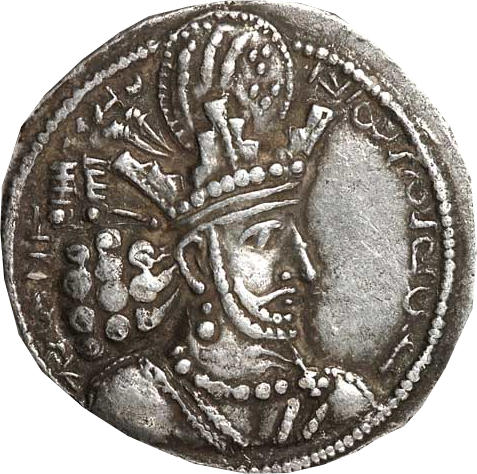 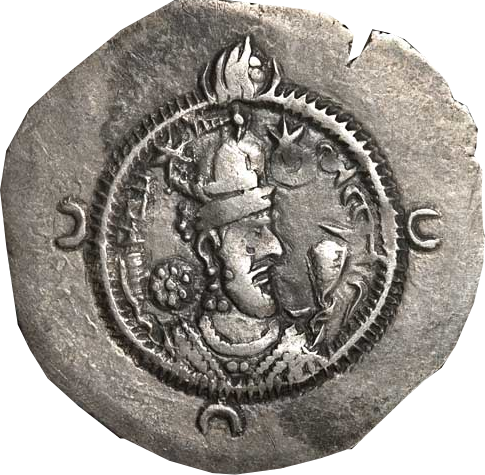 R: (25h) Sassanid Khusrou or Xusrō I Wearing merlon crown with tassel to left and surmounted by crescent with three flames c. 531-579 AD (9) Occidental Mythology, p. 402-403; Denkart 412; from Zaehner, op. cit., pp. 175-76 |
Go Back to Page 297